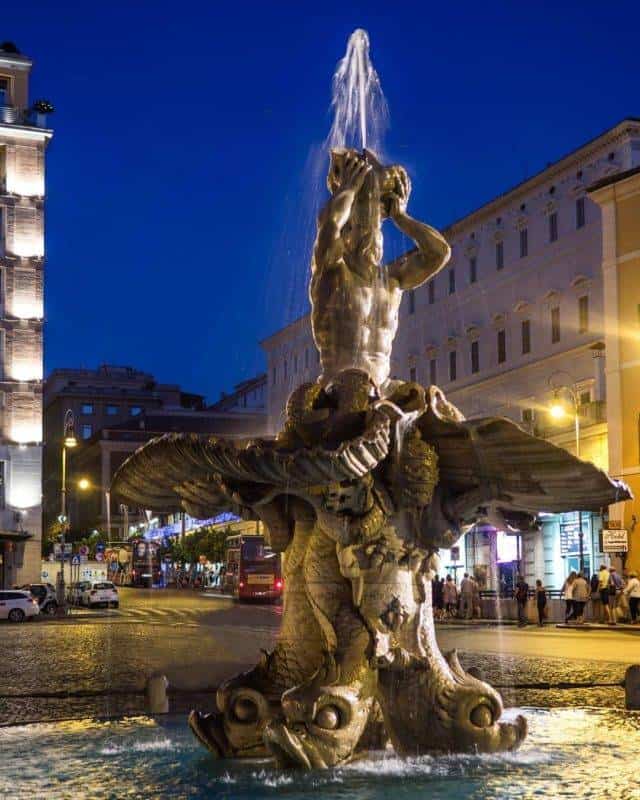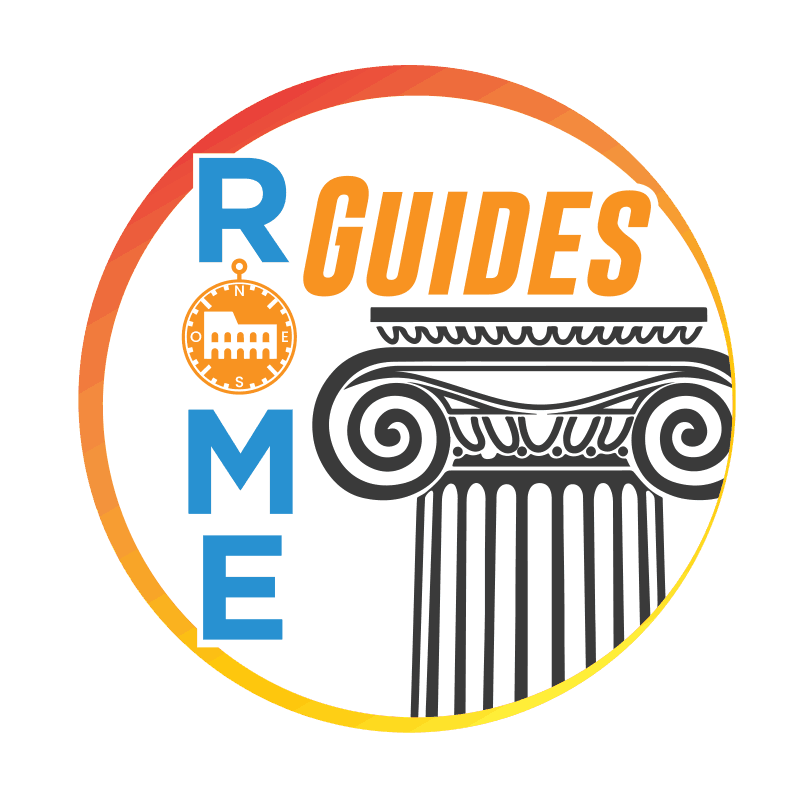ROMAN ITINERARIES – TREVI DISTRICT – ITINERARY 9
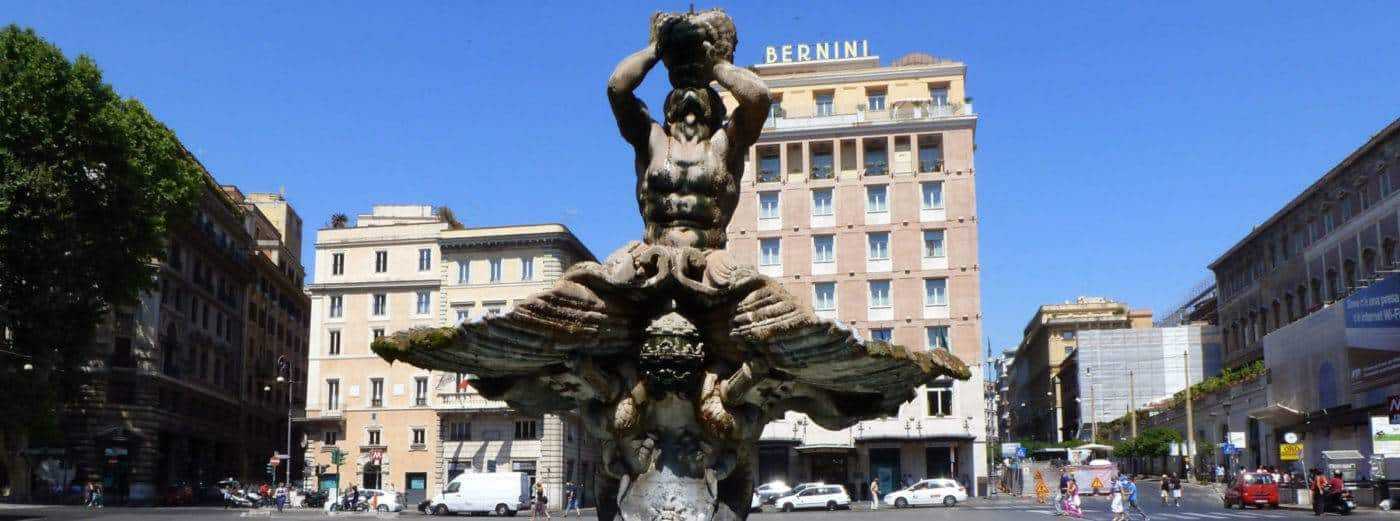
TREVI DISTRICT – ITINERARY 9
The Itinerary 9 of the Trevi District runs around a recently created road axis, via del Tritone, opened after the proclamation of Rome as Capital and immediately considered as one of the most important monumental roads of the “new city“. The starting point is always the amazing work of Nicola Salvi, the Trevi Fountain: from here you take via dei Crociferi to reach in a short time Chigi Square, which takes its name from the homonymous palace, seat of the Presidency of the Council of Ministers.
Via del Tritone – Via dei Crociferi – Largo Chigi – Via di Santa Maria in Via – Piazza Poli – Via della Stamperia – Piazza dell’Accademia di San Luca – Via del Lavatore – Via della Panetteria – Piazza Barberini
CHURCH OF ST. MARY IN VIA
Next to the Colonna Gallery, there is the road of St. Mary in Via: the corner between the latter and Via del Tritone is occupied by the church that gives its name to the street, one of the most interesting of the whole district.
The high travertine facade was begun by Giacomo della Porta in the second half of the 16th Century, and finished a few decades later by Girolamo Rainaldi. Distributed on two orders, it has a certain momentum, accentuated by the presence in the upper order of two slender volutes on the sides. In the lower order stands out the high portal tympanate, flanked by two semi-columns, with two elegant windows on the sides.
The origins of the church, however, are much earlier than the 16th Century: we have to go back to the dark years of the Middle Ages, and precisely to the night between 26th and 27th September 1256, when next to the original church was located the stable of a cardinal, Pietro Capocci, with a well. That fateful night a real river of water began to come out of the well, which in a short time flooded the entire environment, without stopping to flow, as if inside it had suddenly opened the stratum of a spring.
At a certain point, before the eyes of the cardinal’s servants and the crowd, a tablet came out of the well, dragged by the water. Someone grabbed it and began to scream at the miracle: on one side of the flint table was in fact painted the image of the Virgin Mary. At that precise moment, as if by magic, the stream of water stopped.
Cardinal Capocci, to honor this incredible event, decided to have a chapel built on the spot to consecrate to the Virgin Mary, next to the already existing church. Under the pontificate of Pope Innocent VIII, around 1491, the church was completely renovated, and entrusted a few years later by Pope Leo X to the Semitic fathers, who rebuilt it from scratch in 1549, and entrusted the work to the architect Francesco da Volterra.
The interior has a single nave, with four chapels on each side, of which it is worth remembering in particular the first one, where the pious image is preserved together with the sacred well: still today the friars draw there the miraculous water that they distribute to the faithful.
The third chapel, frescoed by Cavalier d’Arpino, and the sacristy, where a graceful Neapolitan crib of the 18th Century is kept, are also worth a look.
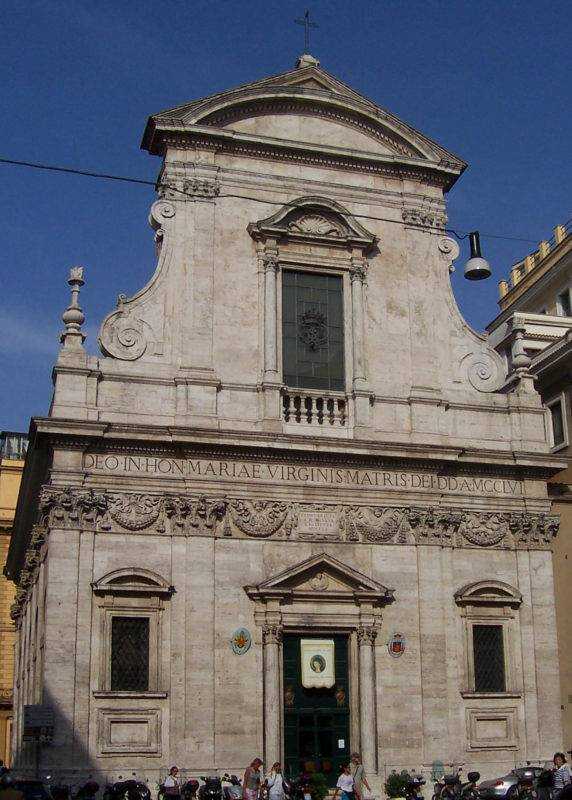
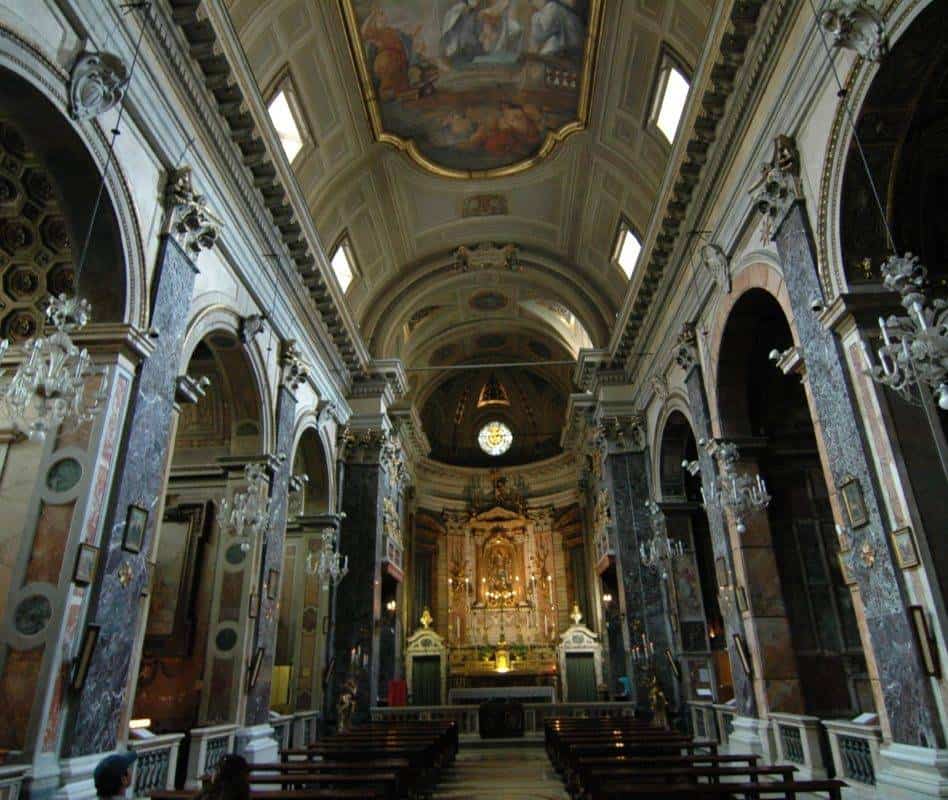
THE CHURCH OF SAINTS ANDREW AND CLAUDIUS
The St. Claudius’ Square serves almost as an atrium to the largest square, St. Sylvester’s Square. On the small square there is another interesting minor church, dedicated to Saints Andrew and Claudius.
Also in this case, its origins are lost in the mists of time, well beyond the Middle Ages. During the splendid years of the Roman Empire, an important temple, dedicated to the Sun and built by Emperor Aurelian in the 3rd Century A.D., stood here.
The church probably stands on a small part of the ruins of the great building, which with its size occupied the entire extension of St. Sylvester’s Square and its surroundings. The church, rebuilt in 1729 by the French architect Antoine Derizet, has a facade of typical 18th Century taste and ends with a curvilinear tympanum surmounted by a coat of arms. Note the two statues of the two titular saints on either side of the portal, sculpted by the two French sculptors Breton and Grandjacquet.
The interior, with its simple but refined appearance, is in the shape of a Greek cross with the walls covered with polychrome marble.
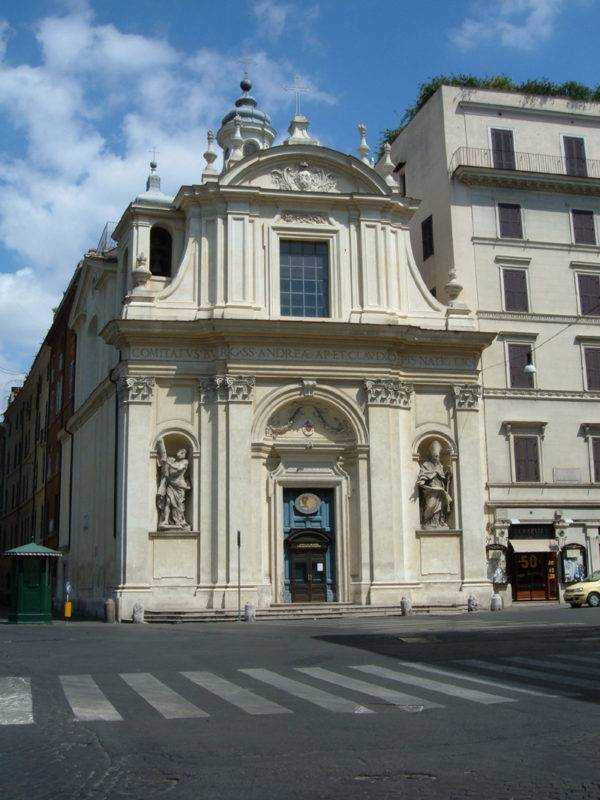
VIA DEL TRITONE
Now take a walk along via del Tritone, in search of small hidden art treasures. The first one is on the right, on the corner with Poli Square: also this time it is a sacred building, a small oratory dedicated to the Holy Sacrament, built in 1576 under Gregory XIII. Under Benedict XIII, at the beginning of the 18th Century, the building was almost completely rebuilt by Domenico Gregorini in collaboration with other famous architects of the time (De Dominicis, Marchionni and Valadier). The facade, rather eventful and all played on the contrast between concave and convex surfaces, seems to resume Borromini’s style. The tympanum is surmounted by two marble statues representing “Faith” and “Hope“, works by the 18th Century sculptor Paolo Benaglia. Inside, the only object worthy of note is a beautiful altarpiece with the “Holy Family“, by the painter Francesco Trevisani.
VIA DELLA STAMPERIA
A few meters further on, we find ourselves in front of a widening where Via della Stamperia, so called because of the presence of the Palace of the Chamber Printing House, established by the papal government and became chamber chalcography with Gregory XVI. The noble building has a decidedly irregular plan disfigured by a series of heavy alterations: built in 1580 by Jacopo del Duca on behalf of Cardinal Luigi Cornaro, it was inhabited for a number of years by Cardinal Mazzarino.
In the 17th Century it was then purchased by the Pamphilj family, who sold it in 1777 to Pope Pius VI, who placed there the headquarters of the Chamber Printing House, which was suppressed about a century later. Currently the building houses some public offices.
The building next door, built in neoclassical style by the architect Giuseppe Valadier in 1837, is home to the National Institute for Graphics and National Chalcography. Inside, in a sort of museum hall, are exhibited the printing tools: the current patrimony of the institute includes about 5000 plates of the major Italian engravers from the 15th to the 20th Century.
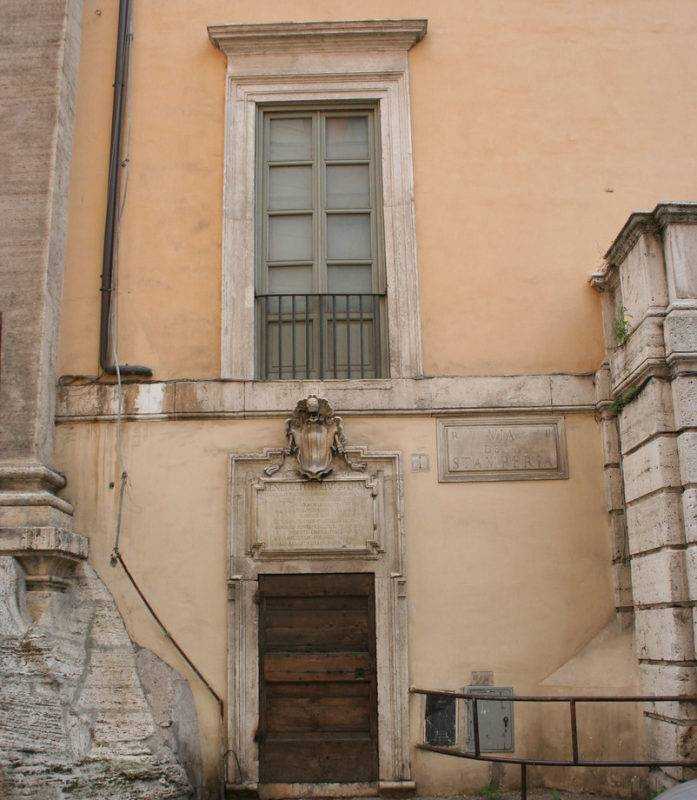
THE CARPEGNA PALACE
In front of the Chalcography opens the small square of the St. Luke’s Academy, dominated by the austere facade of the Carpegna Palace, since 1934 seat of the academy dedicated to the apostle protector of fine arts. Symbolically founded in 1593 by the painter Federico Zuccari, in the following two centuries the cultural and artistic importance of this institution grew more and more, becoming a sort of reference point for Roman and foreign artists. The main activity of the Academy was teaching the arts to young people, who were stimulated to work thanks to some competitions for artists, periodically organized by the Academy. Usually the works presented were then donated to the academy, which kept them in a small collection, which with the passage of time has grown, until it is now the largest nucleus of the St. Luke’s Academy Gallery.
The building owes its fame and fortune to the intervention of Francesco Borromini, who between 1643 and 1650, commissioned by the Carpegna family, transformed the original body of the building into the present one. The brilliant genius of the great Lombard architect manifests itself in some splendid decorative solutions, such as the elliptical ramp without steps that can be walked even on horseback, having as its only precedent the one existing at the time in the Saint Angel Castle.
Borromini’s touch, however, is not only in the staircase, but above all in the portal that precedes it, consisting of two columns that support as many upturned cornucopias, which meet in return to a clipeus with the Medusa’s head. From the capitals hangs a thick garland of flowers and intertwined leaves, with the precise function of hiding the attack of the second floor of the ramp itself, to prevent it from dividing the arch of the portal in two.
This scenographic structure obviously has a symbolic meaning: it indicates the festive hospitality offered by the owners of the palace to their guests, manifested by the fruits of abundance that come out of the cornucopia on the right, and those of God’s grace, contained in the one on the left.
THE WORKS OF THE ACADEMY
Among the outstanding works of the St. Luke’s Academy Gallery, we can mention:
- the “Triumph of Alexander” and “Priam and Achilles“, works by the neoclassical Danish sculptor Thorvaldsen;
- the plaster relief by Antonio Canova, representing “Socrates saving Alcibiade in the battle of Potidea“;
- the “Putto reggifestone”, a fragment of a fresco by Raphael Sanzio who painted it in 1512;
- two works by Titian;
- the “Annunciation” by the Tuscan Lorenzo di Credi;
- the “Mask of Michelangelo“, presumably done by Buonarroti’s pupil Daniele da Volterra.
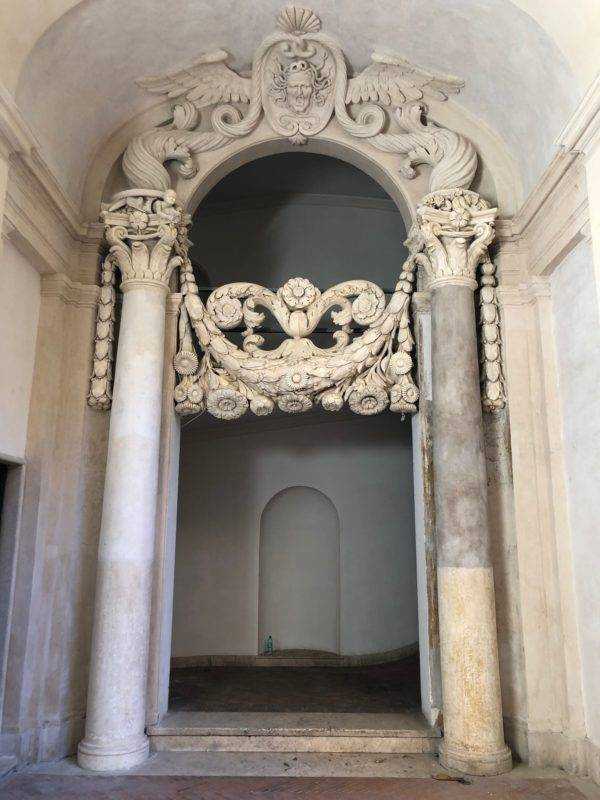
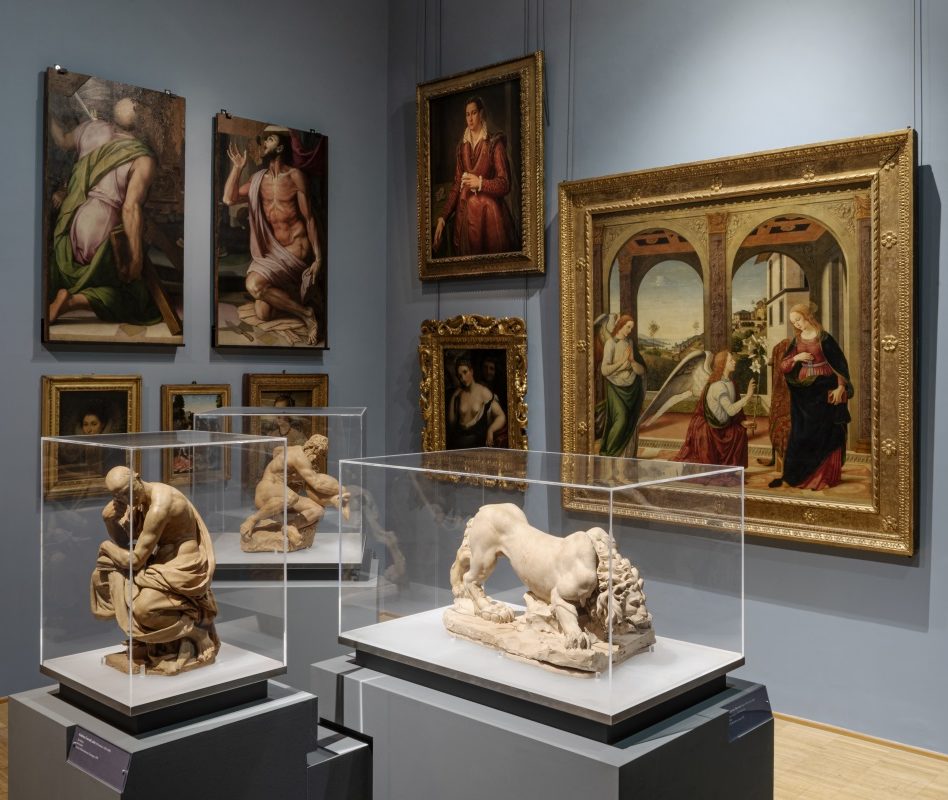
Leaving the Academy of St. Luke’s Palace, walk along the picturesque alley Scavolino and enter Via del Lavatore, one of the few streets in Rome to keep intact a popular flavor, despite being a short walk from Trevi Square. Here, in the shadow of the wall that hides the Quirinal Palace from the sight of the wretched mortals, you can still see the public washhouse (baptized by the Romans “er lavatore der papa“, the papal washhouse), which gave its name to the street.
In the direction of the Tunnel, the first street on the left is via della Panetteria. In this case, the toponymy refers to the oven that baked the bread for the Pontiff’s table, and in exceptional cases also for the poor, such as during periods of famine.
THE ANTAMORO PALACE
The building fabric of this part of the Trevi district consists mainly of 17th Century houses, alternating with the residences of aristocratic families of second rank. This is the case of the Antamoro Palace, at number 15 of via della Panetteria, which keeps, in its small courtyard, a beautiful fountain, one of those treasures of which Rome is very rich, well hidden from the eyes of unsuspecting tourists. The history of the fountain is very curious: in October 1667, Pope Clement XI gave his secret waiter Paolo Strada three ounces of Acqua Felice, as a well-deserved reward for his faithful servitude.
The construction of the fountain is attributed to the architect Gian Lorenzo Bernini, whose hand is in fact recognizable in the structure of the fountain: at the top of the fountain there are two tritons with the left hand holding a coat of arms, while with the right hand they hold a bugle. The basin below, in the shape of a shell valva, is supported by the twisted tails of a pair of monstrous-looking dolphins leaning against a base of pointed rocks. The current coat of arms at the center of the fountain is that of the Antamoro family, who bought the palace in the 18th Century and replaced the original coat of arms of the Rospigliosi family.
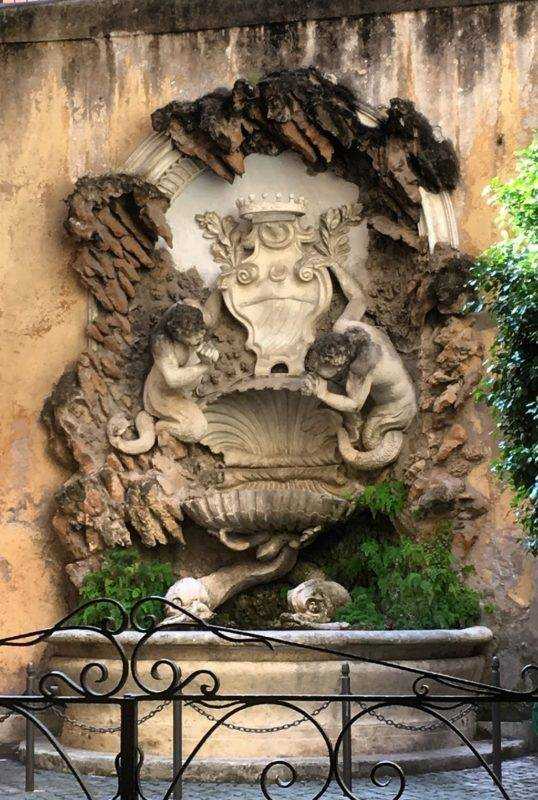
THE TRITON FOUNTAIN
Walking along the last stretch of Via del Tritone, you arrive in Barberini Square, dominated by the famous Triton Fountain, another masterpiece by Gian Lorenzo Bernini, which concludes our Itinerary V.
Built by the brilliant architect between 1642 and 1643, when the works for the completion of the great Barberini Palace were coming to an end, this fountain had, from the beginning, the function of decorating in a consonant way the widening placed in front of the monumental residence of the relatives of Pope Urban VIII.
This is the first fountain realized by Bernini, who experimented here some daring architectural solutions that he will successfully use a few years later, in the grandiose Fountain of the Four Rivers, in Navona Square. Discover it joining the City Center Tour of Rome Guides.
At the center of a large basin stand majestic four dolphins with a threatening expression, with their heads resting on a base placed under the surface of the water. The tails of the fish are facing upwards, twisted in such a way as to support two coats of arms with the Barberini bees and a double-valve shell, on which a mighty newt is placed, with its head turned backwards, all concentrated in the effort of blowing into a large peel, which supports with both hands.
And it is from the heart of the shell that the water gushes out with a very high gush, wetting the entire composition below, made entirely of travertine. It is an authentic monument to the Barberini dynasty, the wealthy patrons of the artist, and in particular to Urban VIII: the coats of arms with bees (heraldic symbol of the family) are in fact surmounted by the papal emblems.
